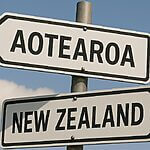In brief
- Could there be a clearer example than the story shared by author Mary Kippenberger, where a professor at Auckland University is described as using their position to strongly promote their political ideology to students?
- Her use of powerful metaphors can mislead readers, mistaking vivid illustrations for historical truths.
- This long term practice of pushing an agenda (over 40 years in this case) is widespread through academia and media. It hinders discussion on key issues like the Treaty of Waitangi and New Zealand’s history.
Academic setback inspires activism
Author Mary Kippenberger’s emotional advocacy for Māori issues in her article “The university grading that wobbled my whole world,” is heartfelt, yet it often confuses ‘facts’ with ‘arguments.’
By intertwining personal beliefs, emotional appeals, and metaphors with historical and environmental facts, her narrative can sometimes make the objective truth hard to discern.
Kippenberger recounts her experience at Auckland University, over forty years ago, where a disappointing grade from Professor Ranginui Walker marked a turning point in her perspective on New Zealand’s social and political landscape.
She says that this academic setback pushed her to delve deeper into the country’s colonial history and the ongoing impacts on Māori communities.
Blending personal beliefs with historical facts
While her passion and commitment to these issues are evident, her method of blending personal beliefs and emotional narratives with historical facts can blur the lines between objective truth and subjective interpretation.
Credit to the NZ Herald that, in publishing it, they also refer readers to an alternative view written by David Seymour.
However, what isn’t questioned in any of the material is whether it is appropriate for a professor to mark a student down for not adopting the professor’s political belief?
We say ‘no’.
Powerful metaphors or misleading illustrations
Kippenberger uses a metaphor to illustrate her view of colonisation: “Māori offer Pākehā a room in their house. Pākehā say, ‘No, we’ll have the house thanks but you can have the shed.’”
While this metaphor effectively conveys her perspective on issues of dispossession of Māori land and rights, it is an argument framed as a vivid illustration. It is not a factual recount.
Such rhetorical devices can be mistaken by the easily convinced for historical truth, potentially misleading readers who may not discern the distinction between metaphor and objective reality.
Moreover, Kippenberger discusses the environmental and cultural degradation brought about by colonisation and the Western way of life, stating, “The forests were full of birdsong and medicine, the waterways teemed with food and life. Te Ao Māori was steeped in a culture of balance. To upset that balance would be to poke the taniwha [Māori mythical creature of water].”
Here, she intertwines cultural beliefs and ecological facts to craft a compelling narrative. While her points about environmental harm may have some validity, she is also ignoring less flattering realities of how things really were.
Emotion vs evidence
Kippenberger’s call for Pākehā to share power and build a sustainable relationship with Papatūānuku (Mother Earth) guided by Mātauranga Māori (Māori knowledge) is an argument for change. However, it relies heavily on emotive language and cultural references, which can again blur the distinction between subjective views and objective evidence.
Furthermore, her points on topics like the effects of colonisation and the role of the Treaty are emotional arguments rather than objective assessments.
Kippenberger’s attachment to her opinion does not make it a fact.
Facts vs arguments
Popular arguments can distort the factual basis of policies. In contrast, facts are supported by verifiable evidence, even if that evidence can be surprisingly elusive if one wants to get precise.
For instance, no one credibly questions whether Māori, or people in general for that matter, have a longer life expectancy than they did in 1840. However, exactly how much it has changed would be much harder to pin down due to a number of factors. These include not really knowing the starting expected age and then changing the definitions around Māori identity over the years.
It’s concerning that academics often mix up facts and arguments, while attempting to convince by resorting to emotion.
We submit (based on personal observation only) this resorting to emotion is more prevalent in NZ than in many other jurisdictions. This practice may hinder rational discussion on important issues like the Treaty of Waitangi and New Zealand’s history.



















